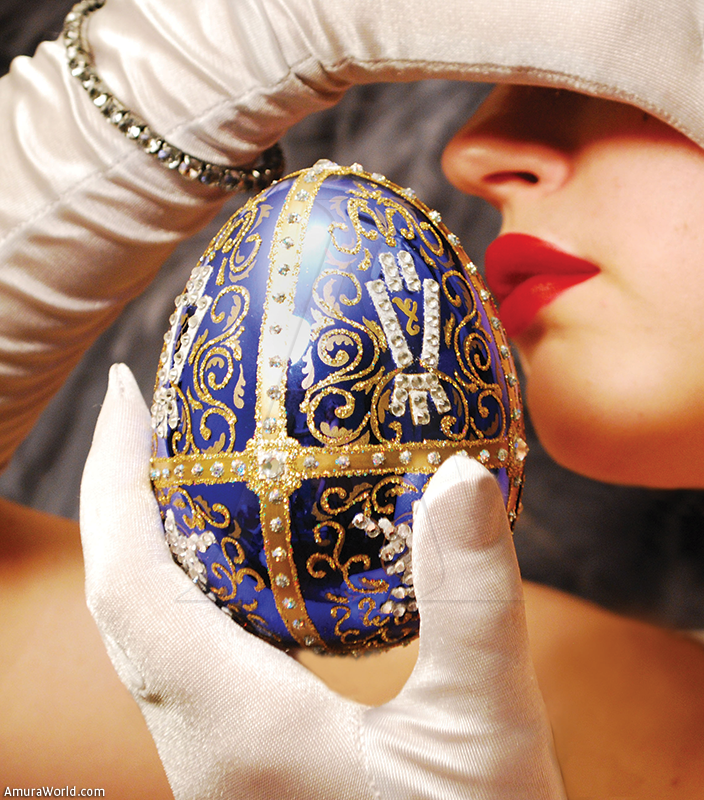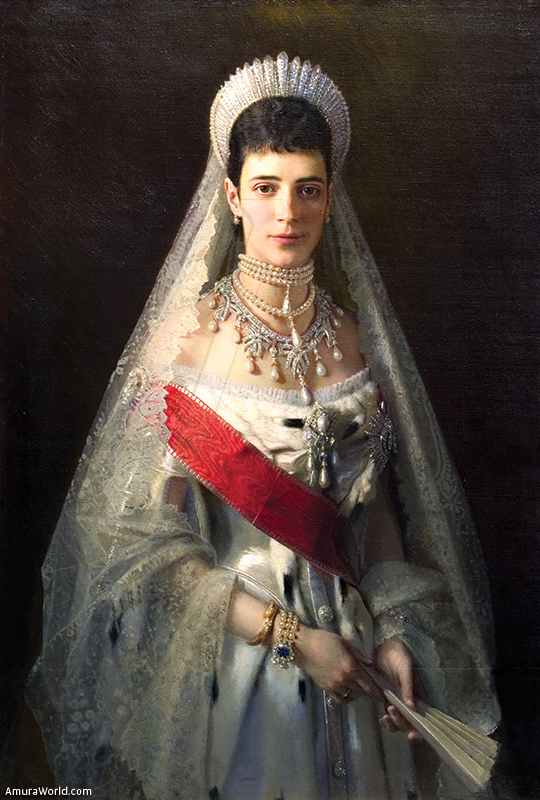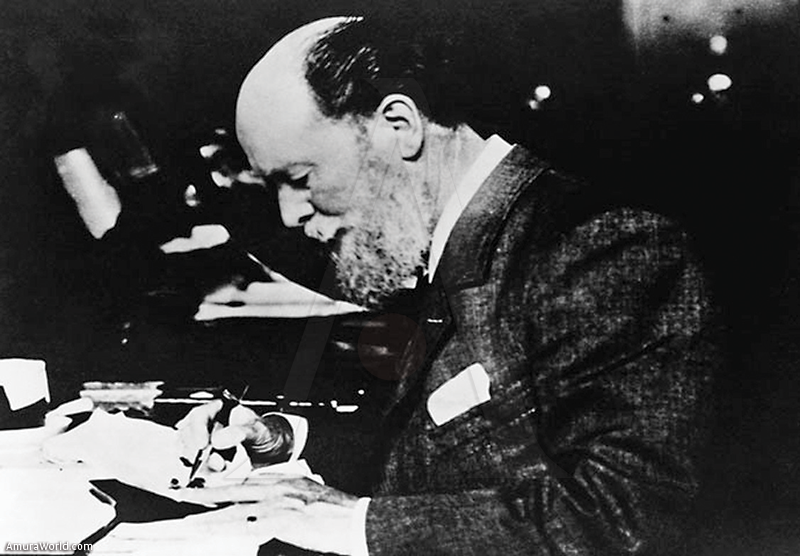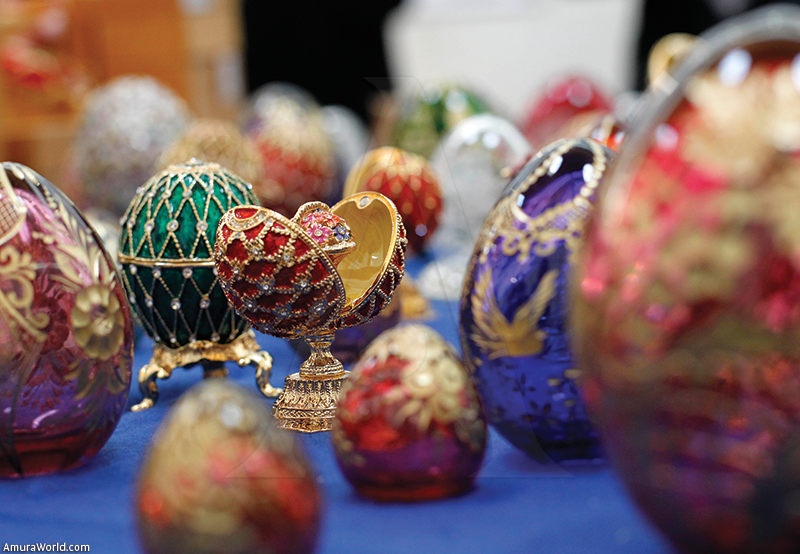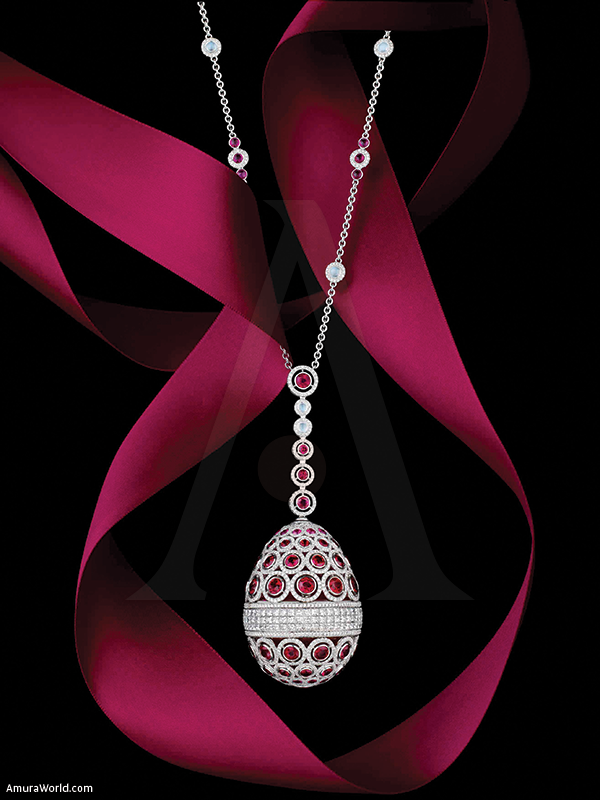An imperial history traced by the most exquisite craftsmanship
Fabergé’s history is intimately linked to life, love and tragedy of the last Romanov Tsar, Nicholas II and his wife, the Tsarina Alexandra, as well as the Russian revolution that changed the course of the world’s history. Of Huguenot origin (Calvinist), with a feverish imagination, talent and entrepreneurial instinct, Peter Carl Faberge became the jeweler and goldsmith of the great Russian imperial court, creating exquisite jewelry and objects, including the legendary series of lavish and ingenious imperial Easter eggs.
His reputation attracted worldwide royalty, nobility, tycoons, industrial and artistic intelligentsia of Paris, Moscow, St. Petersburg and London. In 1917 the Russian Revolution brought a violent end, not only to the Romanov dynasty, but also to the House of Fabergé. The Bolsheviks took Fabergé’s workshops and all production was closed. By that time, Peter Carl Fabergé and his family fled Russia.
In a 1951, a legal agreement saw the Fabergé family to lose the right to perform work and designs under the name of its famous signature. The story came to a full circle in October 2007, when Fabergé, under new ownership and management, announced the reunification of the brand with the Fabergé family. It was launched once more on September 9, 2009 with three jewelery collections: Les Fleurs, Les Fables and Les Faberge Fauves.
Today, with Katharina Flohr as general director and her creative team, Fabergé is forging an identity, while making a powerful fresh comeback; owing tribute to the genius of Peter Carl Faberge as an artist-visionary. This can be achieved with the expertise and guidance of Tatiana and Sarah Fabergé, the great granddaughters of Peter Carl.
The beginning of a legend
The series of lavish Easter eggs created by Faberge for the Russian imperial family between 1885 and 1916, is considered the greatest and lasting achievement of artistry and craftsmanship. These Imperial Easter Eggs are definitely the most famous and impressive artwork of Fabergé.
The story began in 1885 when Tsar Alexander III decided to take a jeweled Easter egg to his wife, Empress Maria Fyodorovna, possibly to celebrate the 20th anniversary of their marriage.
It is believed that the Tsar was inspired by a 18th century egg owned by the Empress's aunt, Princess Wilhelmine Marie of Denmark. It was said that Tsar Alexander III apparently was involved in the design and execution of the piece of jewelry, making suggestions to Fabergé as the project progressed.
Easter was the most important ocassion of the year in the Russian Orthodox Church, this festivity is equivalent to Christmas.An old tradition of bringing hand-colored eggs to church to be blessed always took place. Because of this, Tsar Alexander III had the idea to instruct a gorgeous Fabergé Easter egg and surprise for the Empress. This is how the first Imperial Easter egg was born.
Known as the hen egg, it is handmade with gold as its base and glazed. The shell opening only introduces the opportunity to reveal its first surprise, a yellow golden egg of matte gold.This gift was the starting point of an imperial tradition that lasted for 32 years until 1917.
Each egg took a year or more in order to complete its process, with the participation of a team of highly skilled craftsmen, who worked in secrecy. With time, Fabergé was given complete freedom in the design and execution, with the only requirement to show a surprise in every creation.
Alexander III introduced an egg each year to his wife. The tradition was continued by his son, Tsar Nicholas II, who also gave one egg a year, both to his wife, Empress Alexandra Fedorovna, and to his mother, and then widow Mary Fyodorovna. The most valuable egg ever made was achieved in the year of 1913, which at the moment cost 24,600 rubles (then 2.460 pounds sterling). Today the price would be of 1,87000 pounds.
The Winter Egg, designed by Alma Pih, is famous for its decoration of diamond snowflakes made of carved crystal, engraved and adorned with platinum and diamonds to resemble frost. The egg rests on a crystal base designed as a block of melting ice. It’s surprise is a wonderful platinum basket and lush anemones. The flowers are made of white quartz, nephrite, gold and demantoid garnets and the moss from which they emerge is green gold. Its total height is 14.2 cm. It has 3,246 diamonds. The egg was sold at a Christie's auction in New York in 2002 for $9'600, 000 USD.
Text: Faberge international ± Photo: COVINGTON / BP / KRAMSKOJ / FABERGE / BP / PASLUC / BOVLR

